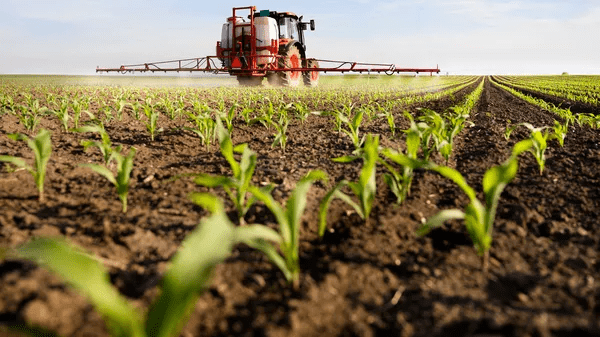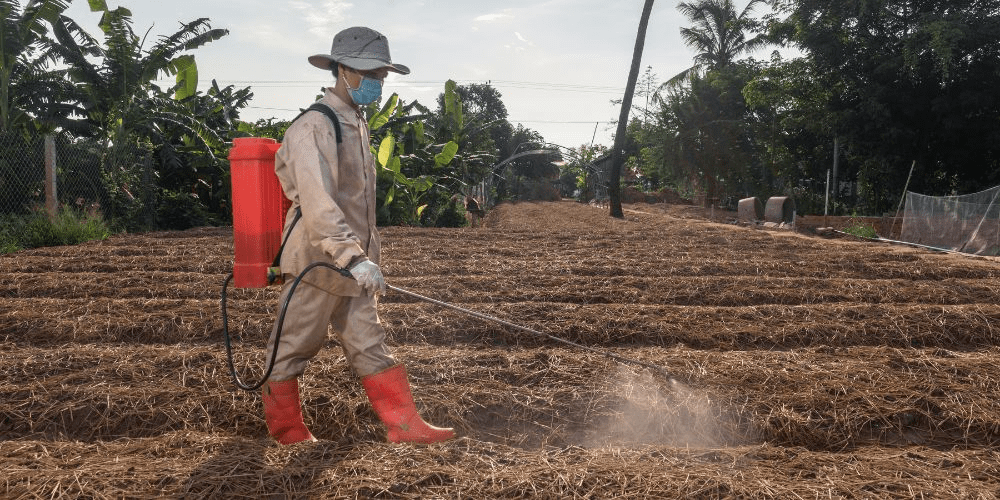Pesticides are not sold in its pure form because they are highly toxic, thus they are often diluted with any carrier to avoid the hazards of poisoning to applicator and environment. The pure forms of pesticides (technical grades) are only used in analytical and toxicological studies.
Pesticides are commercially manufactured in various formulations (by adding various additives) like emulsifiable concentrates, water-dispersible powders, dusts, granules, solutions etc. The strength or active ingredient is mentioned on the label. The liquid concentrates must be diluted, usually with water, before use.
Procedure
Let us see some commercially available pesticides:
Insecticides: Endosulfan 35EC, Malathion 50EC, Metasystox 25EC, Dimethoate 30EC, Phorate 10G, Carbafuron 3G,
Herbicides: Atrazine 50 WP, Simazine 60 WP, Paraquat 24WSC, Fluchloralin 45EC, Alachlor 50EC or 100G, Butachlor 50EC or 5G, Glyphosate 41WSC, Propanil 35EC, 2, 4-D Ethyle ester 18 & 35%, 2, 4-D Amine salt 58 & 72%, 2, 4-D Sodium salt 80 & 85P etc.
Fungicides: Carbendazim 50 SC, Carbendazim 50 WP, Copper Oxychloride 50WP, Difenconazole 24.9EC, Dithianon 5, 10EC, Dithianon 5SC, Hexaconazole 5, 10EC, Hexaconazole 5 SC, Mancozeb 80, 75 WP, Miclobutanil 10 WP, Propiconazole 10, 25 EC, Tebuconazole 24.9 EW, Tricyclozole 75 WP etc.
Read Also : Guide on Starting a Watermelon Farm
Pesticides are recommended in three ways for its field application such as amount of pesticides per hectare (kg/ha), amount of active ingredient or acid equivalent per hectare (kg a.i./ha) and concentration of solution to be applied ( eq 0.07 % of endosulfan).
Before application or purchase of pesticides it is always necessary for farmers to estimate the amount of insecticides or herbicides or fungicides that would be required for application on his farm of definite size. This is part of the planning process so that he will buy only the quantity needed.
There are four categories of calculations that are often carried out. Let us see the methods for calculating the pesticide dose with some example.
Quantity of chemical to put in a tank of a sprayer
How many tank loads do you need per hectare
Area of coverage of a tank load
Active ingredient per hectare
Below are the calculations to provide answers to the questions above.
How much chemical concentrate (at label Dose Rate per Ha) to put in a full knapsack
This is worked out as follows;
Tank Capacity (TC) multiplied by the Dose Rate (DR) divided by the Spray Volume (SV) = Amount of Concentrate (C) in Litres to put in a full knapsack. Let us say that we have a 15 Litre knapsack and a chemical which is applied at 5 Litres per Ha and our calibrated Spray Volume per Ha is 200 Lts.
TC multiplied by DR divided by the SV = C
Answer is 15 multiplied by 5 divided by 200 = 0.375 Litres
How many tankfuls will one use to cover or spray one Ha
Divide the Spray Volume (SV) by the Tank Capacity (TC) to get number of full tanks per Hectare
E.G. SV (200) divided by TC (15) equals number of tanks per Hectare 200 divided by 15 = 13.33 tanks/ha.
How many square metres will one single full tank cover? OR How much will one tank cover at this spray volume per Ha.
Divide the number of square metres in a full Hectare which is 10,000 by the number of tanks per Hectare to get the answer thus –
10,000 divided by 13.33 equals 750 sqm per each full tank.
Assessing beforehand the area to be sprayed is therefore important.

Advantages
It reduces wastage of chemicals.
When only the required quantity is used, less damage is done to the environment.
It is part of planning of farm business enterprise.
The impact on the target pest is assured.
Disadvantages
Some calculations are involved which discourages some farmers
Calibrations are subject to mistakes, which could be costly
Pesticides should be diluted before use on farms as their pure states are highly toxic. Dilution in this case should be done correctly in order to impact on the target pest. This will ensure that both the environment and the user are protected in addition to reducing wastage of materials.
Worked Examples
If recommended as kga.i./ha:
Rate of herbicides is given mainly in terms of a.i. or a.e. /ha
Rate of application
Quantity of material required per hectare = 100
Active ingredient in %
Example: Find out the quantity of simazine 80WP to be sprayed in one hectare area if rate of application is 3 kg a.i. /ha.
Quantity of simazin/ha =3/80 x 100 = 3.75 kg WP/ha.
For the calculation of this type we must know the a. i. present in the commercial product.
If recommended as kg/ha:
Experience has shown that to spray one hectare with a hydraulic nozzle sprayer in good working condition and a 15 liter sprayer, one will need 300 liters of solution,
i.e. 20 sprayer loads.
Example: To control grasses, 5 liter of propanil should be applied per hectare. It means
1 liter = 1000 ml
20 sprayers (15 L capacity each) per ha 5000 ml/ 20 = 250
I.e. 250 ml per 1 small Kap-sac sprayer and 20 loads will be required.
Read Also : Guide on How to Produce Bar Soap/Tablet Soaps

